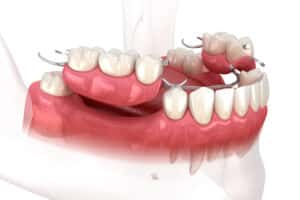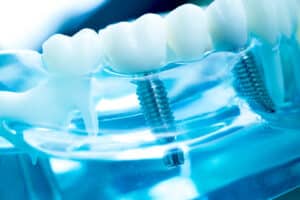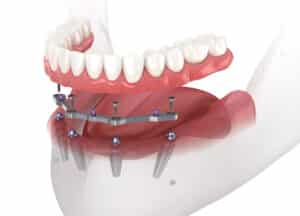Implant Overdentures: New Concepts And Updated Techniques
It has been well documented that implant-related overdentures, also known as “implant supported dentures”, improve a patient’s quality of life. Furthermore, dental professionals have found that implant overdentures provide predictable resolution of the functional and aesthetic compromises associated with conventional dentures. Some of the specific benefits include improved prosthetic retention and stability, resulting in improved comfort eliminating soreness of the load-bearing tissues, and more stable facial aesthetics.
Because this type of prosthesis is implant retained and tissue supported, some cases including chronic mucosal tenderness or severe knife-edged ridges frequently require additional implants to reduce the load on the soft tissues. Therefore, classically two implants are all that is required in the mandible, but these special circumstances may require three to four mandibular implants. Three or four implants may also be necessary in cases of limited bone quality or quantity. Additional implants are frequently required in cases where narrow-diameter implants have been selected. It is interesting to note that the current standard of care does not require splinting of mandibular implants for overdenture use.
The current attachment of choice is the Locator because of decreased cost, increased hygiene accessibility, decreased space requirements and the fact that it is a resilient attachment. Additionally, Locator attachments can diverge by up to 40 degrees and still be of clinical value.
Unlike the mandible, the current trend is four implants in the maxilla in order to eliminate the need for full palatal coverage. In our practice we recommend a bar connector for the four implants due to the frequent finding of decreased bone quantity and quality, leading to the need for shorter implants coupled with the need for angulation correction. After designing the bar, Locator attachments can be tapped into the bar and used for retention. Generally three to four Locators incorporated into the bar are more than sufficient. If less than four splinted implants are suggested for the maxilla, then full palatal coverage as well as lower retention inserts are required. Therefore, two implants (non-splinted) with lower retention housings can generally be used in the maxilla as long as they are coupled with a well-fitting denture with full palatal coverage.
Restorative: Dr. Robert Bernstein / Colonial Dental Lab





